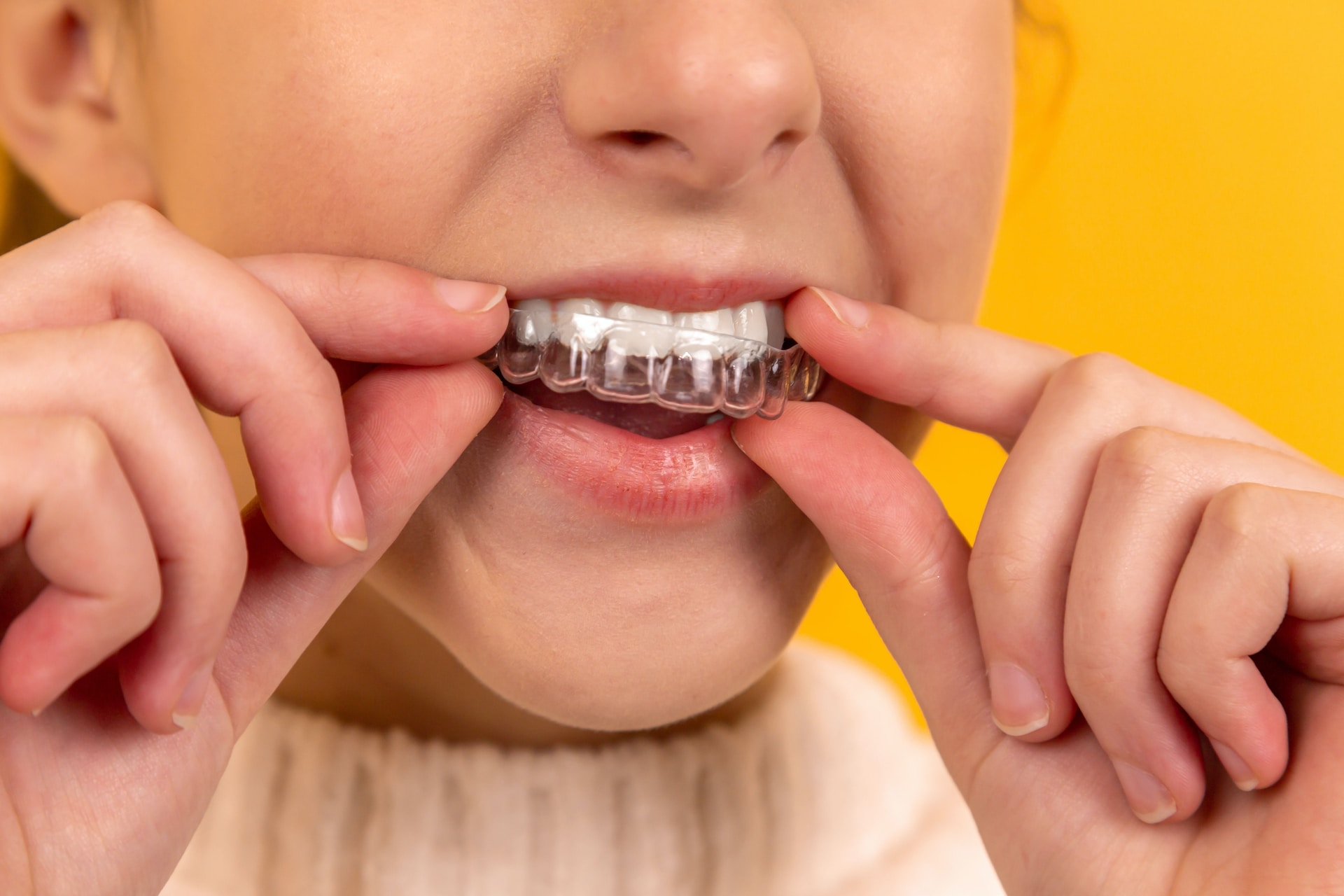The American Dental Association (ADA) has voiced its opposition to direct-to-consumer (DTC) dentistry. DTC dentistry has proven popular due to its low-cost and convenient nature. However, as the ADA point out, DTC dentistry has the potential to be dangerous. Moreover, the ADA hopes that their opposition will underline the importance of seeking in-person dental treatment.

The American Dental Association (ADA) has reaffirmed its opposition to direct-to-consumer (DTC) dentistry, in the wake of concerning recent reports and events regarding DTC dentistry [1].
DTC dentistry may look appealing, but it can cause many problems and is potentially dangerous. The ADA’s opposition will hopefully result in less use of DTC dentistry, and safer oral health for all.
What is direct-to-consumer dentistry?
Direct-to-consumer (DTC) dentistry involves any form of dentistry that takes place without a professional consultation. Effectively, services are sold straight to the consumer, rather than through a dental clinic.
DTC dentistry often involves teeth aligners. Teeth aligners are clear, thin trays that gently shift the position of teeth over time, with the aim of improving the shape and appearance of the teeth.
Teeth aligners should be used only under the supervision of a qualified dentist. When a dentist or orthodontist creates the aligners, they go through a long process to ensure the aligners will work effectively. This isn’t something that can be done by an amateur.
However, DTC dentistry offers aligners to the general public without professional support. DTC dentistry will often involve a technician taking an image of a user’s teeth, whereas some companies ask a person to take their own impression using a mould kit. These place far too much responsibility in the hands of unqualified personnel.
The statement from the ADA comes amidst recent news stories of many people suffering terrible oral health results from DTC dentistry.
Moreover, one of the biggest DTC dentistry companies – Smile Direct Club – has recently announced it is shutting down due to extensive debt, leaving millions of customers mid-treatment [2].
Research into DTC dentistry
Research into DTC dentistry has shown that they are very popular, but have the potential to be damaging.
One study found that teenage girls were the most common group to seek DTC dentistry [3]. The same study found that 87.5% of 470 survey respondents that had used at-home aligners were satisfied with their treatment [3].
However, 6.6% of respondents had to visit their dentist to get corrective treatment due to severe side effects [3]. There is no telling how many others had to later receive treatment.
The research points to users being attracted to DTC dentistry due to the low cost and convenience of it [3]. By cutting out in-person dental visits and consistent monitoring, DTC dentistry companies can offer treatments for thousands of dollars less.
But this comes at a huge loss – with there being no professional support for the patient. Moreover, there is typically no one available to talk to when problems arise.
Why are the ADA opposed to direct-to-consumer dentistry?
The ADA is the largest dental association in the United States, and represents over 150,000 dentists across the nation. Moreover, the ADA has advocated for oral health for several years [1].
The ADA has had a long-standing opposition to DTC dentistry. In fact, their opposition dates back to 2017, when they ran a full-page advertisement in the Wall Street Journal to warn the public against unsupervised dental treatment [3].
In their statement, the ADA stated that DTC dentistry can cause “irreversible harm to individuals” [1]. This means that DTC dentistry can create problems that cannot be fixed.
Moreover, the ADA argue that the public are treated as “customers”, rather than “patients” [1]. This is something that is not seen at brick-and-mortar dental clinics.
The ADA have pointed out that using aligners without professional supervision can result in the potential to “cause bone loss, lost teeth, receding gums, bite problems, jaw pain, and other damaging and permanent issues” [1].
Continuing, the ADA have also said that patients “lose an essential quality control checkpoint” – meaning their dentist – when they use DTC dentistry [1]. When using an aligner through a dental clinic, the dentist would typically engage in regular check-ups to check that the treatment is progressing as intended. This doesn’t happen in cases of DTC dentistry.
Summary
The ADA have stated their primary concern around DTC dentistry is patient safety [1]. This is something that simply cannot be guaranteed when using DTC dentistry.
Their remarks have been backed up by the United Kingdom’s General Dental Council, who have also recorded their concerns about DTC dentistry [4].
A lack of patient education, impressionable people, concerns over costs, and unrealistic body images on social media are all potential causes of the rise of DTC dentistry.
In regards to those that are part-way through aligner treatment, the ADA have urged anyone with incomplete DTC dentistry treatment to speak with their dentist.
Hopefully, the dentist will be able to reverse any damage, and provide stronger and more effective results. This will hopefully enable there to be positive long-term results.
Thinking points…
[1] While it may seem tempting to use DTC dentistry, there are so many benefits of visiting your dentist in-person! You can build a strong rapport with a dentist, who has been professionally trained to spot any problems. They will be able to treat any issues effectively. If you are located in Calgary, Alberta, and are looking for a new dentist, we would love to welcome you to our Taradale Dental clinic! You can find out more about us at our website https://taradaledental.ca – we hope to see you soon!
[2] Many people opt for DTC dentistry due to cosmetic concerns. If you do have worries about the appearance of your teeth, it is important to seek professional advice, rather than rely on someone that isn’t qualified! Here at Taradale Dental, we offer Invisalign™ treatment – which offers professional teeth alignment. We start with a consultation, prepare the moulds, and then provide regular appointments to check the progress of your treatment. Our patients are normally delighted with the results – you can find out more about our services by visiting our website https://taradaledental.ca!
What we offer at Taradale Dental
Taradale Dental is a Calgary dental clinic that provide its patients with a range of treatment options and advice, with the aim of improving oral health and boosting overall wellbeing!
We advise our patients to attend our Calgary dental clinic at least twice per year for a regular dental check-up. At these check-ups, we provide a comprehensive review of a patient’s oral health. If any problems are detected, we have many treatments available. For example, these include cavity fillings and root canals. To strengthen your oral health, we recommend brushing your teeth at least twice a day and flossing regularly.
Here at Taradale Dental, we also have some cosmetic treatments available! These include dental implants, teeth whitening and Invisalign™! Our patients find that these treatments have a positive impact on their appearance, confidence and self-esteem.
Moreover, the fees of our treatments at our Calgary dental clinic Taradale Dental are set in line with the Alberta Dental Fee Guide. This ensures transparent and fair pricing, with no hidden costs.
We hope to see you soon at our Taradale Dental clinic in Calgary! You can find out more about us by visiting our website https://taradaledental.ca.
References
[1] ADA Media Relations. (2023). American Dental Association Reaffirms Policy Opposing Direct-to-Consumer Dentistry. Available: https://www.ada.org/about/press-releases/american-dental-association-reaffirms-policy-opposing-direct-to-consumer-dentistry. Last accessed: 6th January 2024.
[2] BBC News. (2023). Smile Direct Club customers ‘gutted’ and ‘left in lurch’. Available: https://www.bbc.co.uk/news/business-67680748. Last accessed: 6th January 2024.
[3] Wexler, A., Nagappan, A., Beswerchij, A., & Choi, R. (2021). Direct-to-Consumer Orthodontics: Surveying the User Experience. Journal of the American Dental Association. 151 (8): p625-636. DOI: https://doi.org/10.1016%2Fj.adaj.2020.02.025.
[4] General Dental Council. (2022). GDC Statement on ‘direct-to-consumer’ orthodontic treatment. Available: https://www.gdc-uk.org/standards-guidance/standards-and-guidance/gdc-guidance-for-dental-professionals/direct-to-consumer-orthodontics/gdc-statement-on-direct-to-consumer-orthodontic-treatment. Last accessed: 6th January 2024.


